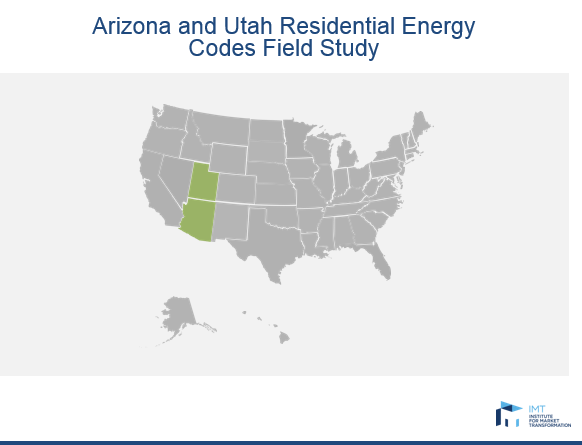Across the United States, high utility bills are costing homeowners a significant portion of their monthly incomes. According to the most recent EIA Residential Energy Consumption Survey, about one in five households reported reducing or forgoing basic necessities like food and medicine to pay an energy bill. Stronger energy codes and more widespread code compliance can help change the tide on this type of energy poverty. Improving compliance with residential energy codes opens up an array of economic and health benefits for homeowners, residents, local governments, and building officials, including:
- Reduced energy costs that yield monthly savings for owners and occupants, helping to boost the local economy.
- More comfortable and durable homes that better shield people from outdoor temperature extremes.
- Better protected occupant health from improved efficiency and indoor air quality.
- Greater market certainty for the building design and construction industry due to consistent implementation across jurisdictions.
- A level playing field for all builders.

As an organization at the forefront of advancing smart building performance codes, policies, and programs across U.S., the Institute for Market Transformation (IMT) has launched a new energy code compliance project in Arizona and Utah with support and funding from the U.S. Department of Energy (DOE). IMT will lead the project in partnership with the Southwest Energy Efficiency Project (SWEEP), Nexant, Utah Clean Energy, AE3Q, and West Coast Code Consultants (WC3). Additional support will be provided by utilities in both states, including Salt River Project, Dominion Energy and Rocky Mountain Power.
Goals of the code compliance study
The project team will work closely with builders, trades, and code officials, as well as other local real estate and energy decision makers in Arizona and Utah to better understand how energy codes impact single-family residential construction. This will be done by conducting baseline studies of each state, identifying the major barriers to compliance, and providing education and outreach activities to drive greater compliance.
This project comes on the heels of eight initial studies completed in different states from Texas to Pennsylvania during 2014-2019, including an IMT-led code compliance study in Alabama. The expansion of data collection to Arizona and Utah will result in a more holistic and deeper understanding of residential construction issues in hot and dry climate zones, as well as compliance issues in home rule states to provide updates to the DOE Residential Field Study Methodology.
What’s Next?
Last week IMT met with stakeholders in Tempe, Ariz. and Salt Lake City, Ut. to describe the project plan in detail, introduce project partners, and get feedback on the proposed sampling plans and initial education planning. Stakeholders were overwhelmingly supportive of the study and getting a baseline understanding of the current compliance rates of new homes in their states.
In addition, we heard several local concerns and interests related to home construction—including load sizing of residential mechanical systems, indoor air quality and ventilation in new homes, and how to arm homebuyers with the information they need about energy efficiency, among other key concerns.
Top Residential Energy Code Concerns and Interests We Heard
- Concerns around load sizing of residential mechanical systems.
Stakeholders accurately pointed out that inaccurate sizing of residential HVAC systems can have consequences on energy use, as well as indoor air quality and the life of the equipment from short cycling. The project team is looking into requesting Manual J calculations from building departments to understand the load sizing trends in both states. Code officials at both meetings were in favor of providing additional information to the data collectors to help them identify ways to make their reviews more efficient and more accurate. - Concerns around indoor air quality and ventilation in new homes.
Both states resoundingly put emphasis on needing to better understand the mechanical ventilation in homes. The drum beat of “Build Tight Ventilate Right” has been going on for a while, but there are still concerns that:
a. Not testing for air tightness may produce a building that is tight enough for ventilation, but no mechanical ventilation is installed;
b. Not planning at design for ventilation has the potential to require costly changes once the house is built because the test shows that its required;
c. Ventilation strategies most commonly implemented are not adequate for new homes.
The code requires mechanical ventilation once homes pass a certain air tightness. The project team will be gathering information on the type of ventilation strategy and air tightness of the homes visited during the study. This will be information we look forward to sharing to discuss training opportunities with the stakeholder groups in our next convening. - Interest in arming homebuyers with information on energy efficiency.
Cars come with a Fuel Economy Label, telling buyers what they are likely to spend on gasoline as one drives the car. Most appliances come with an EnergyGuide Label, estimating how much electricity it will use and the cost to the buyer every year. Why are we still buying houses without any idea how much it will cost the average family to operate one? This conversation has been part of DOE’s Home Energy Score, IMT’s work to get an Energy Rating Index into the energy code, and others working in the home efficiency world (Rocky Mountain Institute, RESNET’s HERS Rating, and ENERGY STAR’s New Homes Program) as a way to differentiate new homes from each other. As the project moves into the education and outreach phase, we will explore options around getting homebuyers information on code compliance requirements. Homebuyers have the ability to change the market by demanding code compliance and energy performance beyond code. - Interest in knowing the current market trends in fuel use.
With heat pumps and heat pump water heaters as efficient electric alternatives to gas appliances, stakeholders were wondering what the project team would find in division of all electric vs. electric and gas supplied homes. The standard data collection form will gather information on fuel use by both heating and water heating appliances in homes and may give insight into the current state of the market for each state.
Did you miss the stakeholder meeting? Have additional questions? We’ll be posting our slides on IMT’s project pages shortly and you can reach out to me anytime at Kimberly.cheslak@imt.org.


